History of Constanta
A number of inscriptions found in the town and its vicinity show that Constanta lies where once Tomis stood. Tomis was a Greek colony in the province of Scythia Minor on the Black Sea's shore, founded around 500 BC for commercial exchanges with local populations.
The importance of Tomis grew during 3rd and 1st centuries B.C. In this period huge wealth was accumulated due to the economical development, based on the harbor activity.
In 29 BC the Romans captured the region and annexed it as far as the Danube, under the name of Limes Scythicus.
Tomis was later renamed to Constantiana in honour of Constantia, the half-sister of Constantine the Great (274-337). The earliest known usage of this name was in 950. The city lay at the seaward end of the Great Wall of Trajan, and has evidently been surrounded by fortifications of its own.
"Pax Romana" is followed by the barbarian invasions, the first wave was during 3rd and 4th centuries. The city survived and became the residence of the province Scythia Minor, in the context of the break up of the Roman Empire. Tomis from the Roman-Byzantine period was an important Christian religion center. The Christianity practices here were of apostolic origin due to the Saint Apostle Andrew. But the city has also a political and military role, 5th – 7th centuries, during the migratory waves – Huns, Slavs, Bulgarians, Petchengs, Cumanians and the last ones the Tartars and Turks.
In the 14th century another empire was in expansion in this region, the Turkish Empire. Dobrogea and the town of Constanta were integrated in a Turkish province, being conquered by military force, starting with the 15th century till the end of the 19th century.
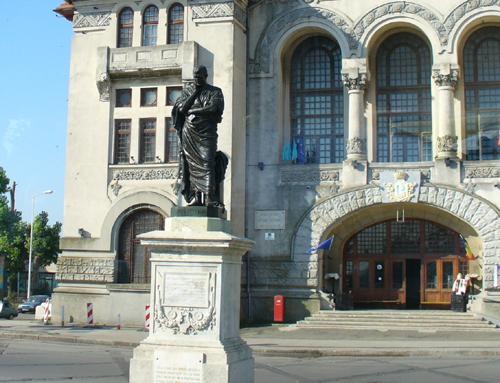 We began our day in Constanta with a tour of the city. Our first stop was at the Archaological Museum, the former City Hall. A statue of the Roman poet Ovid (43 BC-17) stands in the square in front of the museum.
In 8 AD, he was banished by Augustus and lived there for eight years, celebrating the town of Tomis in his poems.
We began our day in Constanta with a tour of the city. Our first stop was at the Archaological Museum, the former City Hall. A statue of the Roman poet Ovid (43 BC-17) stands in the square in front of the museum.
In 8 AD, he was banished by Augustus and lived there for eight years, celebrating the town of Tomis in his poems.
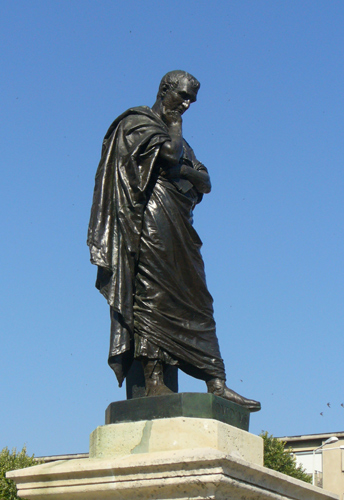 A closeup of Ovid, who was sent to Constanta by Augustus.
A closeup of Ovid, who was sent to Constanta by Augustus.
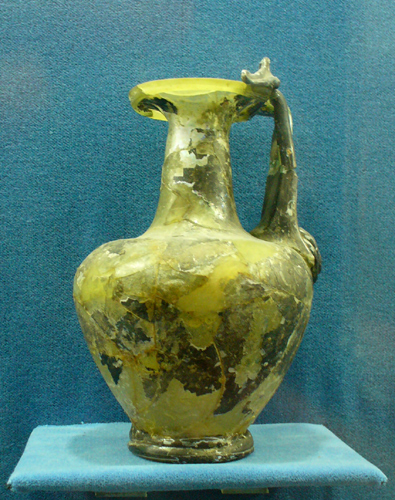 Glass from 1st c. AD.
Glass from 1st c. AD.
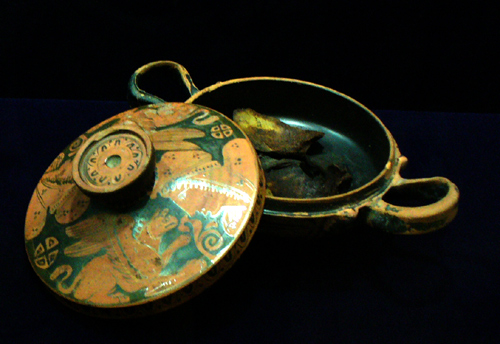 A Greek bowl from the 4th c. BC.
A Greek bowl from the 4th c. BC.
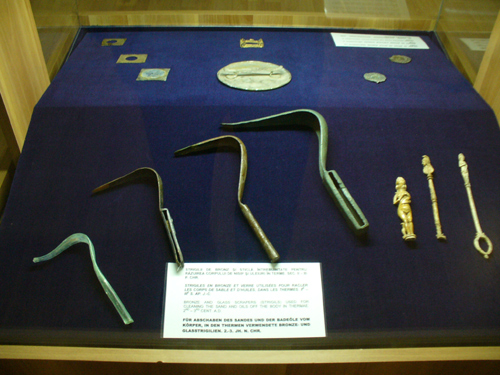 2nd-3rd c. AD scrapers used by the Roman men to scrape off the sweat and oil after some time in the caldarium (hot room) at the baths.
2nd-3rd c. AD scrapers used by the Roman men to scrape off the sweat and oil after some time in the caldarium (hot room) at the baths.
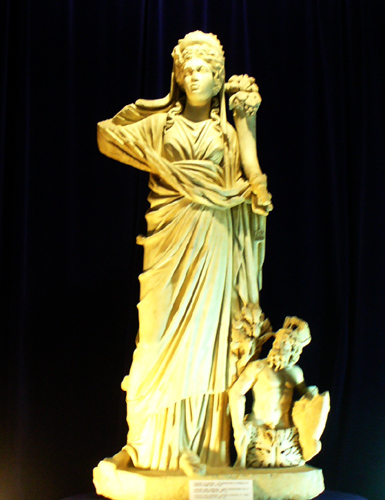 The 2nd c. AD marble statue of the Goddess Fortuna, the city protectress, with Pontos, the Black Sea God.
The 2nd c. AD marble statue of the Goddess Fortuna, the city protectress, with Pontos, the Black Sea God.
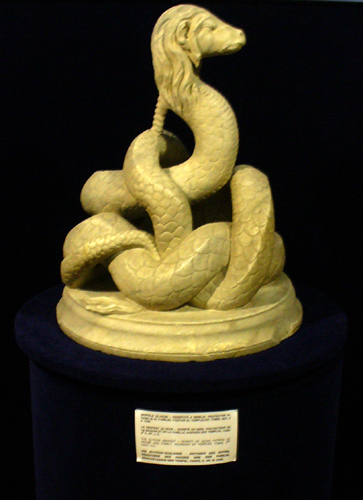 A 2nd c. AD marble statue of the serpent Glycon, a snake God.
A 2nd c. AD marble statue of the serpent Glycon, a snake God.
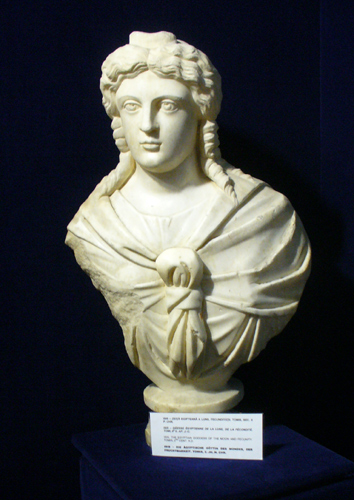 Isis, an Egyptian goddess.
Isis, an Egyptian goddess.
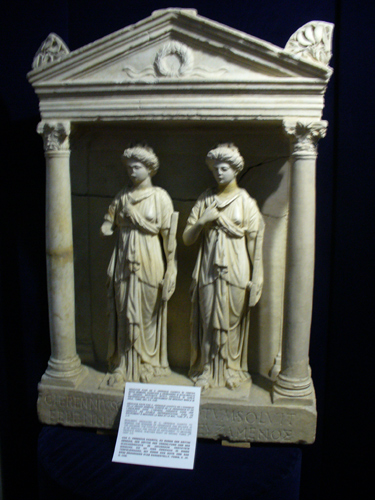
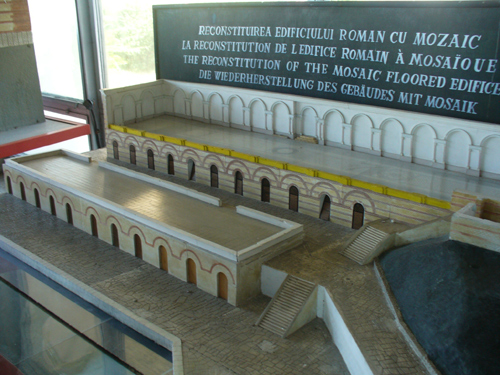 A model of a vast Roman complex on three levels which once linked the upper town to the harbor. Built toward the end of the 4th century AD and developed over the centuries, it was the city's commercial center until the 7th century. Archaeological vestiges point to the existence of workshops, warehouses and shops in the area.
A model of a vast Roman complex on three levels which once linked the upper town to the harbor. Built toward the end of the 4th century AD and developed over the centuries, it was the city's commercial center until the 7th century. Archaeological vestiges point to the existence of workshops, warehouses and shops in the area.
 Today, only about a third of the original edifice remains, including more than 9,150 sq ft of colorful mosaics.
Today, only about a third of the original edifice remains, including more than 9,150 sq ft of colorful mosaics.
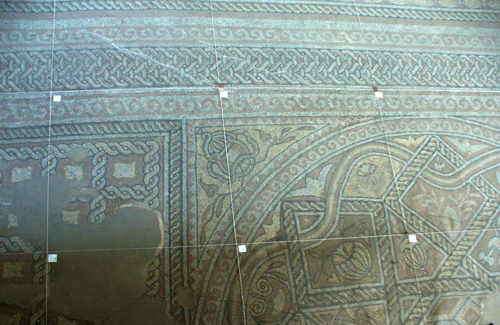
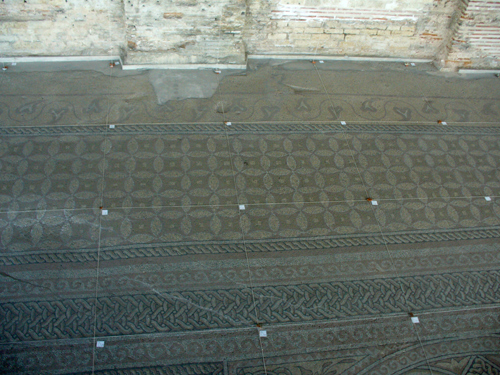
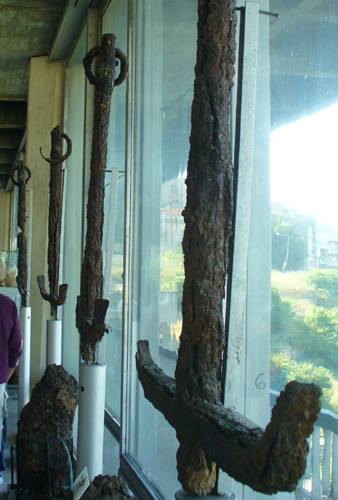 Anchors recovered from the harbor.
Anchors recovered from the harbor.
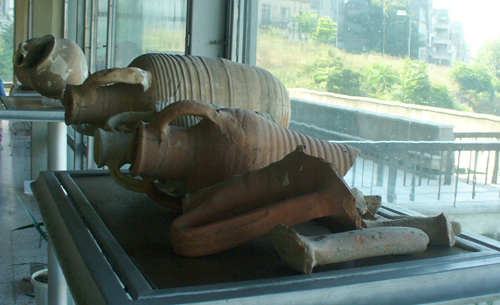 Amphorae, used for storage in shipping.
Amphorae, used for storage in shipping.
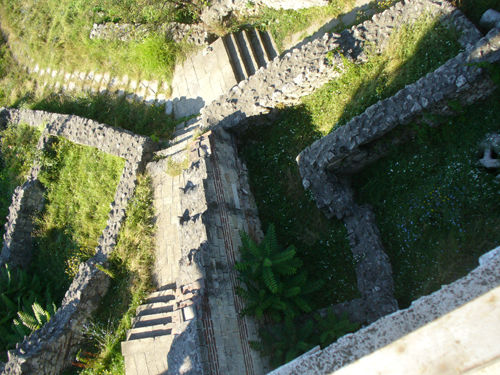 Looking down on some of the Roman ruins below.
Looking down on some of the Roman ruins below.


A gravestone of a Christian woman, identified by the plaque above.
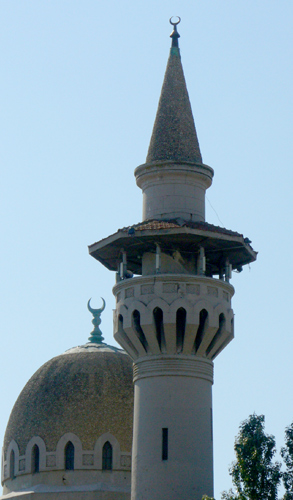
Built in 1910 by King Carol I, the Great Mahmudiye Mosque is the seat of the Mufti, the spiritual leader of the 55,000 Muslims (Turks and Tatars by origin) who live along the coast of the Dobrogea region. The building combines Byzantine and Romanian architectural elements, making it one of the most distinctive mosques in the area. The main attraction of the mosque is the 164-ft minaret (tower) which offers a stunning view of the old downtown and harbor. Five times a day, the muezzin climbs 140 steps to the top of the minaret to call the faithful to prayer.
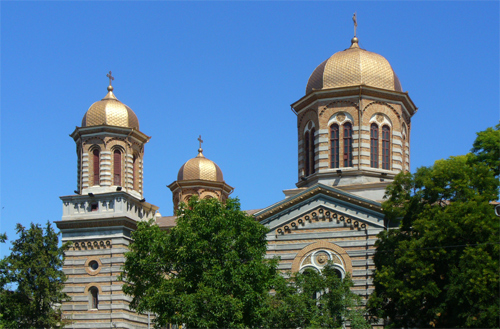 The St. Peter & Paul Orthodox Cathedral, constructed in Greco-Roman style between 1883 and 1885. The church was severely damaged during World War II and was restored in 1951.
The St. Peter & Paul Orthodox Cathedral, constructed in Greco-Roman style between 1883 and 1885. The church was severely damaged during World War II and was restored in 1951.
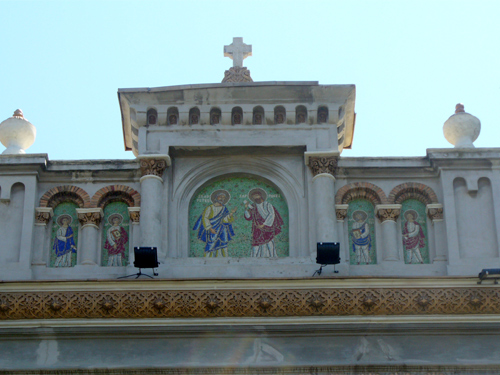 Mosaics of Peter and Paul on the front of the church.
Mosaics of Peter and Paul on the front of the church.
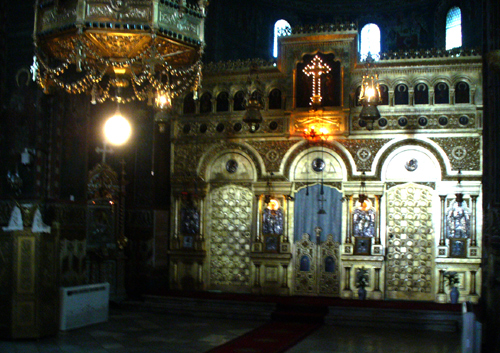 The interior murals display a neo-Byzantine style combined with Romanian elements best observed in the iconostasis and pews, chandeliers and candlesticks (bronze and brass alloy).
The interior murals display a neo-Byzantine style combined with Romanian elements best observed in the iconostasis and pews, chandeliers and candlesticks (bronze and brass alloy).
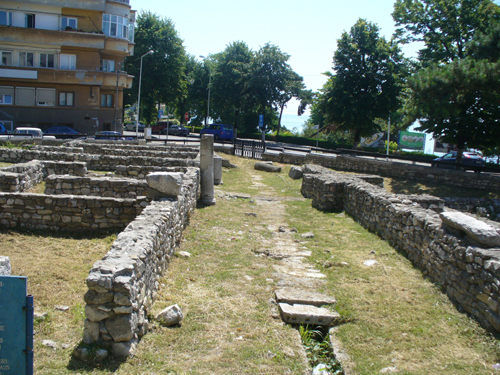 Roman ruins next to the cathedral.
Roman ruins next to the cathedral.
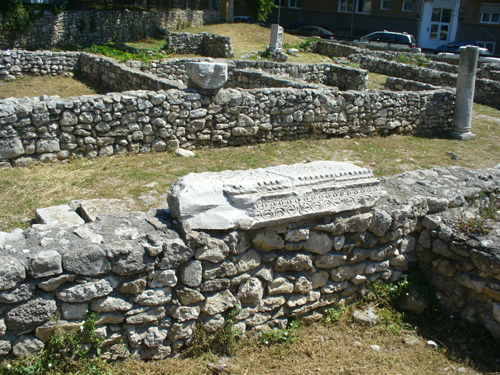

The block in the upper center of the photograph at the left is enlarged above to show the cross.
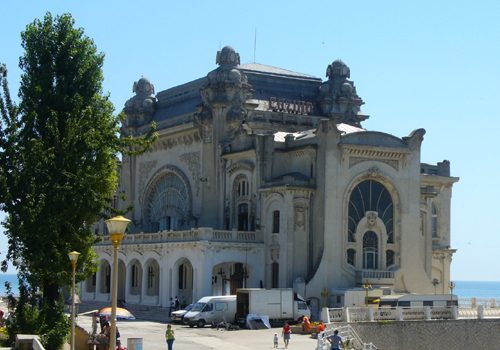 The Casino was built in 1909 and is a real symbol for Constanta. It was also one of the few representatives of 'art nouveau' style in Romania.
The Casino was built in 1909 and is a real symbol for Constanta. It was also one of the few representatives of 'art nouveau' style in Romania.
After the morning in Constanta, we began our cruise from the port to the Black Sea Canal, which would bring us to the Danube.
